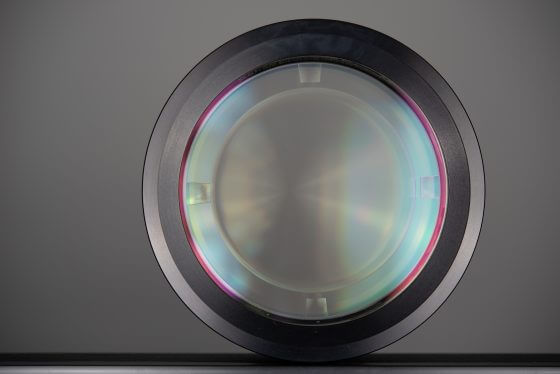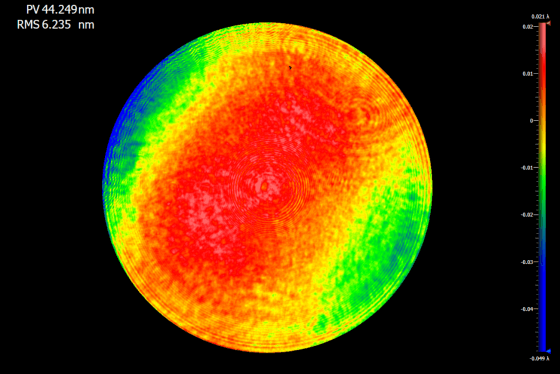Computer Generated Holograms (CGH) in combination with Fizeau interferometers are widely used as a proven and established tool to inspect aspheric surfaces, cylindrical lenses and free-form surfaces with the highest precision. Aspheres with an additional diffractive structure can also be tested.
DIOPTIC has been offering such CGHs for more than 20 years, with a special feature that still leads to increasing popularity among users: In contrast to conventional CGHs, our so-called DFNL CGHs (Diffractive Fizeau Null Lens) can be attached directly to the interferometer and do not require an additional transmission sphere.

DFNL: compatible with all Fizeau interferometers
DIOPTICs DFNL CGHs are delivered with a standard bayonet mount and can be attached directly to the interferometer. This results in a much easier handling compared to conventional CGHs. The elimination of the transmission sphere also makes it possible to test larger convex surfaces, since the entire entrance aperture of the interferometer can be used.
In contrast to conventional CGHs, DIOPTIC DFNLs are manufactured on precision fused silica substrates with a surface flatness of lambda/10 (PV) or better. Since these substrates also provide the reference surface for the interferometer, a highly accurate reference wavefront is generated. The mechanical stability is guaranteed up to a diameter of 230 mm or 9 inches by appropriate substrate thicknesses of up to 24 mm.
Easy alignment, fast and precise measurements
The simple measurement setup when using DFNL CGHs allows fast and precise inspection of aspherical surfaces, cylinders and free-form surfaces. As a DFNL CGH is attached directly to the Fizeau interferometer, no additional CGH adjustment mechanism is required. Auxiliary holograms to align CGHs to the transmission sphere are also not required. So-called alignment or fiducial holograms, which are individually designed for each tested surface, enable the set-up in the shortest possible time. Free form surfaces in particular can be aligned very well with this method.
The CGH surface, which generates the aspherical wavefront, also functions as a reference surface for the interferometer. With conventional CGHs, transmission wavefront errors of the substrate are directly reflected in the measurement result. DFNL CGHs do not show this measurement error due to their principle. DIOPTIC guarantees a wavefront error of the reference surface of less than lambda/10 for all DFNL CGHs. On request, values < lambda/20 can be achieved.

Measurement accuracy below 10nm rms for Diffractive Transmission Spheres (DTS)
For large convex lens surfaces with special radii of curvature, it is often not possible to find suitable transmission sphere interferometer lenses. DIOPTIC therefore regularly manufactures specifically adapted “Diffractive Transmission Sphere” CGHs (DTS) for testing these surfaces. With the help of a Random Ball Test these DTS CGHs can be calibrated very well. The wavefront measurement shown here has a systematic wavefront error of 6.2nm rms. This is also a value that we typically achieve for testing aspheres.
After calibration using this test, DTS CGHs can achieve measurement uncertainties better than lambda/50 PV.
Interferometric surface testing with Twyman-Green interferometers
Users of Twyman-Green interferometers unfortunately cannot use our DFNL CGHs. In this case we offer the design and manufacturing of conventional CGHs. For a fast adjustment of the CGH relative to the transmission sphere we offer a suitable 5-axis CGH adjustment mechanism.
If you are interested, find more details about testing of aspheres at our division Diffractive Optics.
To get advice, contact: Dr. Frank Weidner | Phone: +49 6201 650 40-17